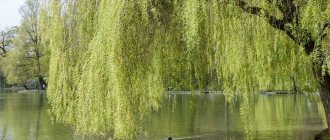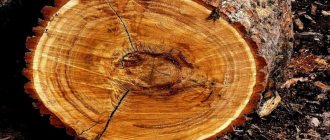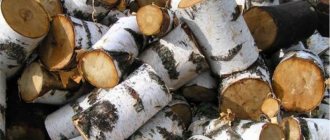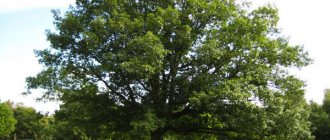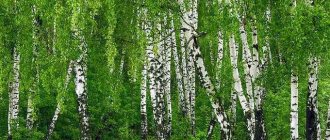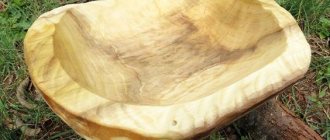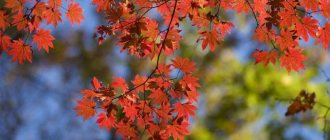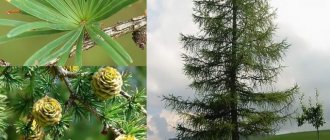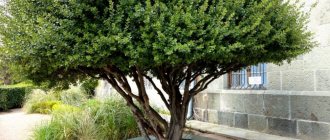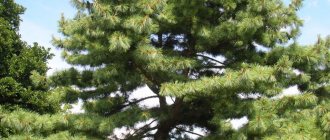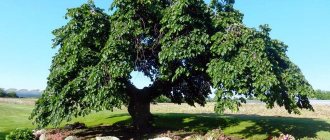Botanical description
Rough elm (lat. ulmus glabra) is a giant tree reaching a height of 30 m. There are other names - elm, mountain elm. The culture prefers to grow in temperate latitudes of the European and Asian parts of the earth. In the Caucasus, trees of this species most often grow in the mountains.
The crown has a cylindrical semi-oval shape. Some varieties, such as Ulmus hollandica Wredei, are columnar. The tree crown is very dense and does not allow sunlight to pass through.
The trunk of a mighty elm, reaching a diameter of 2 meters, is usually covered with cracked bark. The branches are grayish-brown in color. The leaves are elliptical, slightly oblong. The length of the leaves ranges from 8 to 15 cm.
Unlike other species, rough-leaved elm is picky about the soil, especially its moisture. The tree loves moisture very much, so in case of severe drought it can get sick. As for frost resistance, elm has weak resistance. In frosty conditions the plant may die.
The tree is ready to bear fruit by 7-8 years. The elm blooms in small inflorescences of an eggplant hue. The flowers are located in the leaf axils and bloom in the spring.
Distribution of the species
The homeland of the rough elm is the Northern Hemisphere. The species' range covers Central and Eastern Europe, as well as the Crimean Peninsula and Asia Minor (see map below). The tree is also found in China and the Caucasus. On the Scandinavian Peninsula (particularly in Norway), the range of the mountain elm extends beyond the Arctic Circle, reaching 68 degrees north latitude. In Russia, the northern border of its growth runs through the southern regions of Karelia, Komi and the Arkhangelsk region.
The rough elm grows mainly in deciduous forests, where it most often acts as a companion to oak. Occasionally found in the second tier. The tree also grows in the steppe zone, mainly in ravines and on the slopes of river valleys. In the mountains, elms grow up to 1400 meters above sea level.
Varieties
There are several varieties of elms, each of which is suitable for planting in city parks and alleys.
Botanists distinguish 3 main types:
- Camperdownie elm (Ulmus glabra Camperdownii) is a tree of small height. The crown of the plant has an umbrella shape. The leaves are broadly ovate, 15-20 cm long. The flowers have a purple hue. Rough camperdowney elm is a frost-resistant species, despite the fact that it grows mainly in illuminated areas.
- Rough elm Pendula (Ulmus glabra Pendula) is an elm with a flat-topped crown, up to 40 m long. The leaves are unequal, greenish in color. The main distinguishing feature of the species is the presence of bark with deep cracks. Rough elm Pendula grows in some European countries, as well as in North America. It tolerates shade well, but is light-loving.
- Weeping - a decorative species with low hanging branches. The bowl-like crown grows 10 m. The leaves are ovate and do not turn yellow in the fall. Under optimal conditions, weeping elm lives up to 600 years.
All of the varieties listed above are used in landscape design. They are planted in parks and alleys so that the tree protects walking people from the scorching sun.
Distribution of the species
It grows from Karelia in the north to Asia Minor in the south; in the Caucasus it can be found at an altitude of 1400 m above sea level, which is why the tree is also called mountain elm or mountain elm. It is found in Europe, China, North America.
In nature, it can be found in mixed, broad-leaved forests, along rivers, in steppe regions on the slopes of ravines.
Did you know?
The described giant gave names to several settlements. The earliest mention of the village of Vyaz in the Pskov region dates back to 1503.
Planting and care
Any variety of elm grows well in loose, well-moistened soil. Despite the fact that elm is a shade-tolerant plant, it should be planted in a bright area. It does not tolerate soil salinity, so the gardener should first prepare a mixture for planting. To do this, you will need to mix sand, compost and manure in equal parts.
In order for the crop to begin to grow better, it is recommended to put lime in the planting hole. The area around the trunk is mulched with sawdust or peat. Within a week after planting, seedlings require abundant watering. On a hot day, it is worth pouring at least 30 liters under the plant. water.
During the growing season, fertilizing is regularly applied to the soil. Mineral complexes or organic matter are used as fertilizers. In spring and summer, they are brought into the tree trunk circle.
Pruning branches makes the tree attractive. The procedure is carried out 4 years after planting the elm on the site. Until this time, dry and broken branches are periodically removed from the young elm. It is also recommended to trim branches growing inside the crown.
Young seedlings are covered for the winter for 3 years, and after that the elm will be able to overwinter on its own.
What it is
Elm belongs to the elm family. The tree was so named because of the characteristics of its use in the past. Previously, bast, which was extracted from its bark, was used for knitting various objects. The plant is attractive. It is high - on average 15-25 meters. Elm reaches this level quickly due to its active development. When he turns 20-25 years old, growth slows down, and after several decades it stops completely. The tree has a powerful root system and a large trunk. The surface of the bark is smooth to the touch. As the bark ages, it becomes more wrinkled and peels off in places.
The elm crown is distinguished by its power and spreading nature. The oval foliage along the edges is decorated with cloves. Its size can be large or miniature. The leaves are attached to the branches using short cuttings. In summer, the color of the leaves is dark green, but with the onset of autumn it changes to red. After this, the foliage falls off.
Due to the jagged frame of the leaves, elm is difficult to confuse with other trees. The flowering period occurs in spring and does not last long. A little later, seeds form on the branches. At the end of spring they ripen and become objects of reproduction for the tree.
The lifespan of the elm is approximately 200-400 years, but sometimes even older specimens are found.
Reproduction
Reproduction of mountain elm occurs with the help of ripened seeds. The fruits of the tree are lionfish, which spread in large quantities over long distances. The wind picks up the winged nuts, helping them fly as far as possible.
Gardeners propagate the tree by grafting, from seeds, or by cuttings. For spring planting, cuttings are taken in February-March. At first they are kept in a cool room for 2-3 weeks, and then placed in water, cutting off the bottom layer.
To achieve the desired variety of rough elm, use a rootstock with its own root system. After the onset of May, an incision is made on the trunk into which the rootstock is inserted. The grafting site is fixed with insulating tape, and when the cutting grows together with the trunk, the tape is removed.
To beautifully decorate recreation areas near ponds or near benches, elm is grown in standard form. Seedlings aged from 3 to 5 years are planted in a permanent place in the garden. They must have a straight trunk and a developed root system.
Growth conditions
Mountain elm is a fast-growing and shade-tolerant tree. The plant thrives in loose chernozem soil, but does not tolerate excessively saline soils. In regions with arid climates these are extremely bad. An important condition for the growth of elms is constant access to fresh water. That is why in the steppe they can be found in floodplains and on the slopes of ravines.
Elm is very resistant to heat, but does not tolerate severe frosts. In severe winters, the tree may simply freeze and die. Elms are often planted in cities and towns, as well as near large industrial enterprises.
Diseases and pests
Rough elm is a plant that is vulnerable to pests and diseases. Most often, the tree is damaged by leaf-eating insects, such as:
- The elm leaf beetle is an insect with an oblong body of black and blue color. The beetle has three stripes on its back, which makes it look similar to the Colorado potato beetle.
- The elm springtail is a butterfly that first skeletonizes leaves and then eats them completely. Most often found in young steppe plantings.
- Elm sapwood is a weevil that carries spores of the fungus Ophiostoma ulmi. It attacks weakened or drying trees.
An elm infested with insects can be identified by its withering branches. Over time, the tree begins to slowly dry out. To prevent this from happening, certain biostimulating substances are introduced into the soil.
Fungal disease is also dangerous for rough elm. Another name is Dutch disease. The fungus spreads along the pathways, after which the blood vessels become blocked with a gummy substance. Over time, sap flow stops in the affected area. The tree begins to dry out and die. In this case, it should be uprooted and burned.
Sooty fungus is another dangerous disease for rough elm. It appears as a black coating on the leaves and branches of the tree. The mycelium does not penetrate the leaf tissue, so plaque can be easily removed mechanically. To prevent the recurrence of honeydew, it is necessary to remove the source of honeydew - aphids.
Meaning and Application
Young shoots of rough elm are used as branch feed for livestock. In addition, trees and shrubs play an important role in landscaping urban landscapes, towns, streets, parks and roads. Decorative species are most often planted near private houses and cottages to decorate the local area.
Wood bast (subbark) is of low quality, so it is used in the production of boxes. The bark, in turn, is released for dye production.
The wood of the rough plant has many positive properties. It is able to resist rotting in conditions of high humidity. Despite its hardness, the wood is perfectly processed.
Due to its unusual natural texture, it is used to make furniture and baseball bats. Increased wear resistance allows it to be used in the manufacture of floor coverings. In addition to the furniture industry, rough elm is used in carpentry and mechanical engineering.
Use in landscape design
Decorative types of elms are very popular among landscape designers.
Elms grow quite quickly - in 3-4 years a decent tree can emerge from a small seedling. This feature of the plant can be successfully used when forming a hedge. Due to the fact that rough elms tolerate pruning well, accelerated regeneration turns the crown into a dense mass from which giant compositions can be created.
In addition to hedges, standard plants are used in other landscape design compositions. Rough elm fits harmoniously into a Japanese rock garden and also looks great together with apple trees, cherry trees and field ash.
The spreading crown of the tree forms a shelter, in the shade of which it is recommended to plant lilies of the valley, astilbe and ferns. Due to the fact that weeds do not grow well in the shade, you can create a cozy lawn with low-growing grass under the tree and place a bench there.
The most important thing in the process of decorating a garden is not to plant elms next to pears and currants. These fruit crops are often attacked by pests, which can move to the rough elm and infect it.
Use in landscape design
Pendula elm looks advantageous on open lawns in parks, city gardens, and large home areas. It can be planted along paths, along the edges of borders or near the house. But they take into account its peculiarity - to grow on fertile, well-lit lands and its lifespan. The tree does not tolerate replanting, so you need to immediately decide in what place the elm is planted, so as not to touch it in the coming centuries.
Pendula can be combined with similar wild trees, but refined and grafted onto a standard. Together they will make up an original composition. You can alternate in a line the Pendula elm and ornamental low-growing shrubs with brightly colored leaves; they are planted as an artificial hedge.
